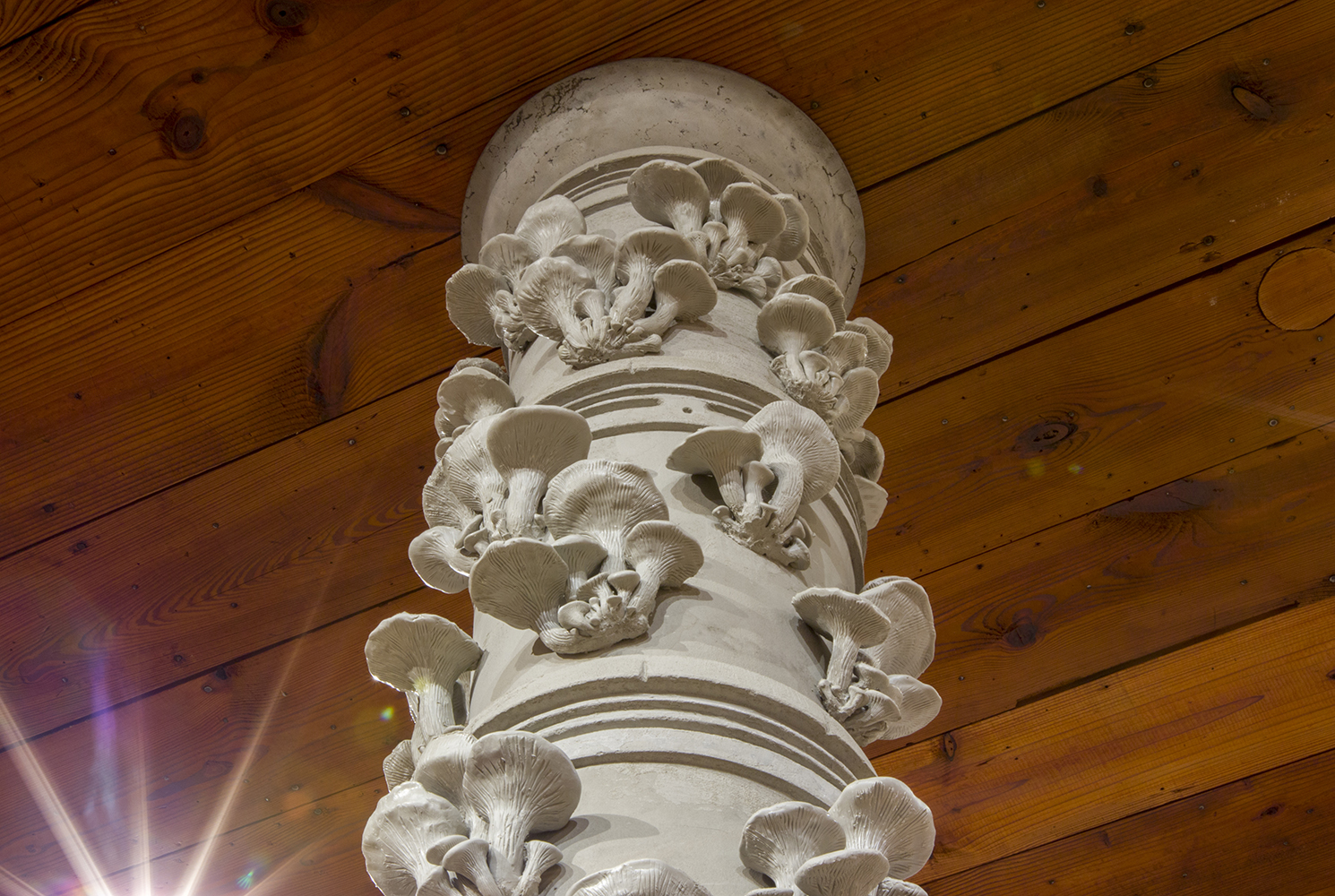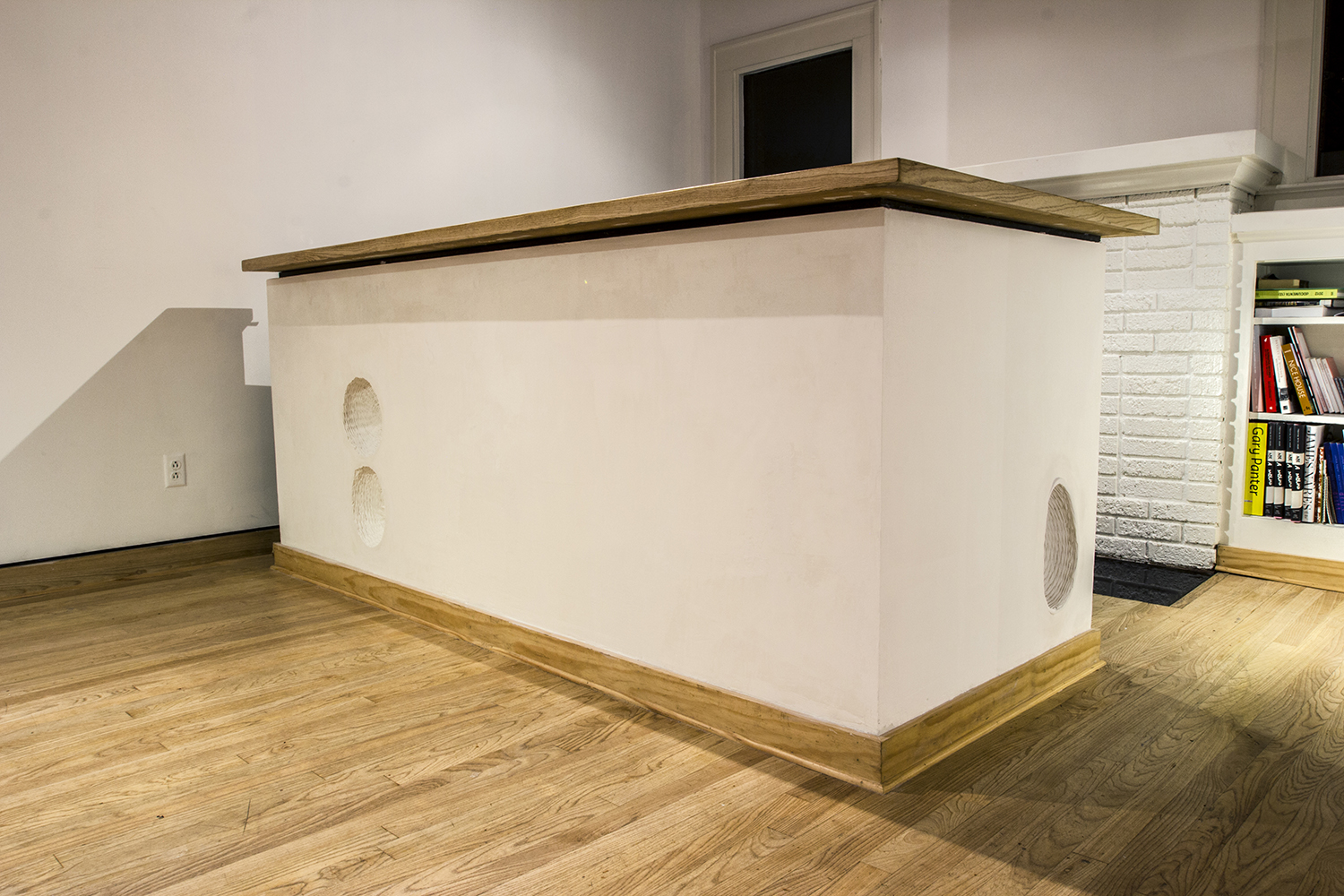Lily Cox-Richard
Stringer Lode
Opening Reception
February 19, 7-9pm
On view
February 19- April 9, 2016 (Thursdays-Saturdays: 12-6pm, and by appointment)
Tung-Hui Hu: Reading and Gallery Talk
February 24, 7-9pm
Wendy Vogel: Reading and Gallery Talk
April 9, 2-3pm















Lily Cox- Richard (photo: Sharad Patel, 2013)
Lily Cox- Richard
This exhibition inaugurates a new body of work for Lily Cox-Richard, centered on the systems, widespread but largely unnoticed, that undergird more conspicuous structures. Mycelia, the fungal equivalent of a root system, can sprawl wider than football fields, invisible but for a few mushroom caps. Cottage industries, far from the heaving global marketplace, provide solid local economic footing and hark back to social arrangements that will more than likely never be completely displaced. And the plumbing and wiring in our walls really only get our attention when they stop working.
These systems are successful in no small part because they go unremarked; if most public acclaim is reserved for the loudest, the grandest, and the most exceptional, these networks assert the value of dispersion, interdependence, and restraint. So there’s a twist to Cox-Richard’s celebration of the overlooked: in rendering them visible, she subverts their natural assets. It’s an irony echoed in the show title’s allusion to mining: a stringer lode, unlike a concentrated mother lode, is a fine lacework of veins. To get at the ore a miner needs to demolish the countryside and sift the rubble. Delicacy, context and continuity fall prey to blunt, analytical differentiation. That sense of dislocation – of an object designed for connection newly isolated – gives Cox-Richard’s sculptures their eerie potency. For Wattle and Daub she sets plaster casts of woven baskets into the gallery wall, recessed like niches. Though they allude to practical handiwork and craft economies, their uselessness as receptacles implicates them in a very different system of evaluation. Their placement – a little too low, a little too close to a corner – likewise interrupts the typical function of the wall, both in terms of display and support. They are as much breach as sculpture.
The carved columns in Cistern depict stacks of five-gallon buckets repurposed for DIY mushroom cultivation. Many mycologists today believe that mushrooms can mitigate or even reverse damages inflicted on the environment by cleaning up pollutants, rehabilitating depleted soil, and growing renewable building materials. Cox-Richard’s floor-to-ceiling columns, though not in fact structural, embody that optimism, implying reinforcement and ascendant ambition.
Lily Cox-Richard’s lives and works in Houston, and is the Critical Initiative Coordinator for the Core Residency Program. Her solo exhibitions include Hirschl & Adler Modern (New York), Vox Populi (Philadelphia), and the Hudson River Museum (New York). LCR has been awarded an Artadia grant, a Smithsonian Artist Research Fellowship, a postdoctoral fellowship in the University of Michigan's Society of Fellows, and residencies at the Core Program, Millay Colony, and the MacDowell Colony, and will be in residence at Artpace in Fall 2016.
Wendy Vogel (photo: Kristine Larsen, 2014)
Writer in conversation: Wendy Vogel
Wendy Vogel is a critic and occasional curator based in New York. A former editor at Art in America, Modern Painters and Flash Art International, she has also contributed to publications such as Artforum.com, ArtReview, Brooklyn Rail, frieze and Rhizome. Working closely with artist Peter Halley, she edited a volume on the alternative arts magazine index that was published by Rizzoli in 2014. Wendy has organized curatorial projects for venues including the Hessel Museum of Art, Bard College, the Künstlerhaus Schloss Balmoral, and Abrons Arts Center. She was a Critical Fellow in the Core Residency Program at the Museum of Fine Arts Houston, and holds an MA from the Center for Curatorial Studies at Bard College.
